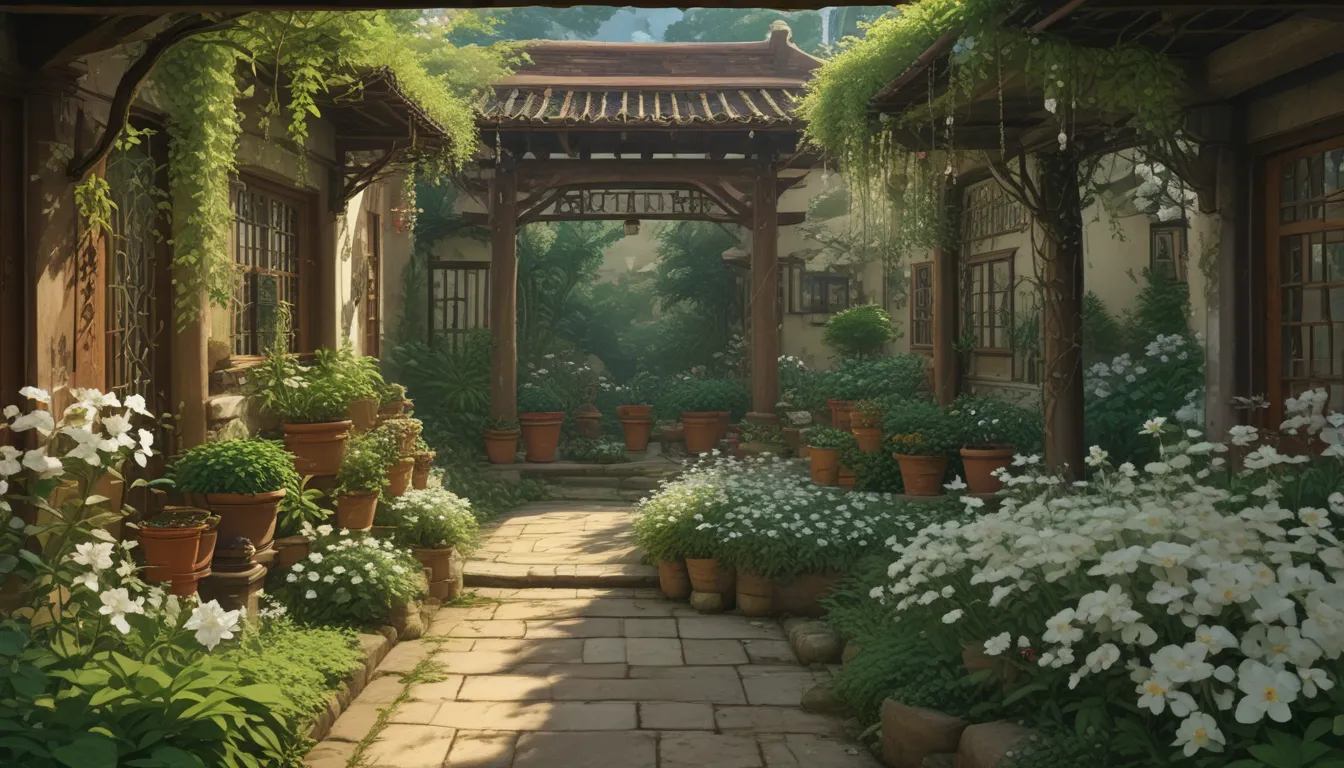The Beauty of Jasmine: 13 Stunning Varieties for Your Garden

Have you ever been captivated by the delicate beauty and intoxicating fragrance of jasmine flowers? If so, you’re not alone! These lovely plants are a popular choice for home gardens due to their star-shaped flowers and enchanting scent.
While many of us are familiar with the tall vining types of jasmine, which elegantly climb up supports and structures, there are also equally delightful shrub varieties to explore. These shrubs, with their smaller stature and stiffer stems, can be trained onto upright structures or espaliered along fences and walls.
In this article, we’ll take an in-depth look at 13 popular types of jasmine vines and shrubs that you can grow in your own home and garden. From their stunning flowers to their fragrance and wildlife appeal, jasmine plants have a lot to offer. So, let’s dive in and explore these beautiful varieties together!
Discovering the World of Jasmine
Jasmine plants are not only beautiful but also functional in the garden. They attract bees, butterflies, and hummingbirds with their pretty star-shaped flowers in shades of pink, white, and yellow. These plants are also resistant to deer, making them a versatile addition to any landscape.
Most jasmine species are summer-flowering, but there are also winter-flowering varieties that provide early food sources for pollinators. However, it’s essential to note that not all jasmine plants are fragrant, so be sure to check the plant specs carefully before making your selection.
While jasmine plants are tender perennials that are typically hardy in USDA Hardiness Zones 8 to 11, they can also thrive in cooler regions with proper care. Many varieties are well-suited to container growth and can be enjoyed as year-round houseplants or indoor winter guests.
Now, let’s explore 13 popular types of jasmine vines and shrubs that you can grow in your home and garden!
Vining Types: Climbing Vertical Displays
Vining types of jasmine add a touch of elegance to garden structures with their twining stems that climb gracefully upwards. Here are some popular twining varieties to consider:
1. Azorean Jasmine
- Scientific Name: Jasminum azoricum
- Description: This evergreen vine features sweet, lemony fragrance and pure white star-shaped flowers. It grows up to 10 to 12 feet and thrives in Zones 10 to 12.
2. Forest Jasmine
- Scientific Name: Jasminum abyssinicum
- Description: With glossy dark green leaves and fragrant white flowers, this fast-growing vine reaches a height of 16 to 18 feet. It is hardy in Zones 8 to 11.
3. Pink Jasmine
- Scientific Name: Jasminum polyanthum
- Description: Originating from China, this evergreen climber produces intensely fragrant pink or white star-shaped flowers. It can reach a mature height of 15 to 20 feet and is hardy in Zones 8 to 11.
4. Poet’s Jasmine
- Scientific Name: Jasminum officinale
- Description: Known for its raspberry pink buds and fragrant white flowers, this spectacular climber is perfect for arbors and trellises. It grows up to 15 to 40 feet and is hardy in Zones 8 to 11.
5. Spanish Jasmine
- Scientific Name: Jasminum grandiflorum
- Description: This deciduous to semi-evergreen vine produces fragrant white flowers and glossy dark green leaves. It reaches a height of 8 to 12 feet and is hardy in Zones 10 to 12.
6. Stephan Jasmine
- Scientific Name: Jasminum x stephanense
- Description: This hybrid variety features fast-growing, evergreen vines with fragrant pink flowers. While listed for Zones 7 to 10, some gardeners have had success growing it in colder climates as well.
Shrub Types: Smaller in Stature, Equally Charming
Shrub species of jasmine offer a unique charm with their loose, scrambling growth habit and stiffer stems. Here are some delightful shrub varieties to consider:
7. Angel Wing Jasmine
- Scientific Name: Jasminum nitidum
- Description: This fragrant evergreen shrub produces long-petaled white flowers with a purple tinge. It makes an excellent ground cover or container plant and thrives in Zones 10 to 11.
8. Arabian Jasmine
- Scientific Name: Jasminum sambac
- Description: Featuring small, waxy white flowers with an intense vanilla fragrance, this evergreen shrub is perfect for containers and foundations. It reaches a height of up to 12 feet and is hardy in Zones 9 to 11.
9. Dwarf Jasmine
- Scientific Name: Jasminum parkeri
- Description: This mounding shrub with arching stems produces small fragrant yellow flowers in the early summer garden. It reaches a height and spread of two to three feet and is hardy in Zones 9 to 10.
10. Indian Jasmine
- Scientific Name: Jasminum auriculatum
- Description: This small climbing shrub produces white starry flowers with a deep gardenia scent. It grows up to four to five feet and is hardy in Zones 9 to 11.
11. Italian Jasmine
- Scientific Name: Jasminum humile
- Description: With fragrant yellow tubular flowers, this evergreen shrub is ideal for foundation plantings and can reach up to seven feet tall and wide. It is hardy in Zones 7 to 9.
12. Showy Jasmine
- Scientific Name: Jasminum floridum
- Description: Native to China, this evergreen shrub blooms from early summer to fall with bright yellow flowers. It is hardy in Zones 8 to 10 and can reach up to five feet tall and four feet wide.
13. Winter Jasmine
- Scientific Name: Jasminum nudiflorum
- Description: Producing bright yellow star-shaped flowers on bare branches, this deciduous shrub is ideal for cooler climates. It is hardy in Zones 6 to 9 and can reach a mature length of up to 15 feet.
Bringing Jasmine Indoors
Whether shrub or vining types, jasmine plants can be cultivated indoors for year-round enjoyment. Popular indoor varieties include Pink Jasmine, Spanish Jasmine, and Arabian Jasmine. These plants require regular pruning to maintain a compact form, and vining varieties may need a hoop or trellis for support.
Fragrant Delights for Your Garden
Jasmine plants are a delightful addition to any garden, offering stunning blooms and intoxicating scents. Whether you choose a vining variety for vertical displays or a shrub type for ground covers, jasmine plants are sure to enhance your outdoor space.
So, consider adding a touch of fragrant finery to your garden with jasmine plants. Place them near windows, patios, or seating areas to fully enjoy their beauty and fragrance. And remember, not all jasmine varieties are fragrant, so choose wisely to create a sensory garden experience that delights all your senses.
Are you growing jasmine in your garden? Do you have a favorite variety? Share your experiences in the comments below and feel free to share a picture of your beautiful blooms!
For more jasmine gardening tips and tricks, be sure to check out these helpful guides:
- How to Prepare Jasmine Plants for Cold Weather
- How to Grow Asiatic Jasmine
- Why Is My Jasmine Plant Dropping Leaves?
Enjoy the beauty and fragrance of jasmine in your garden and create a sensory oasis that delights both you and your garden visitors. Happy gardening!





